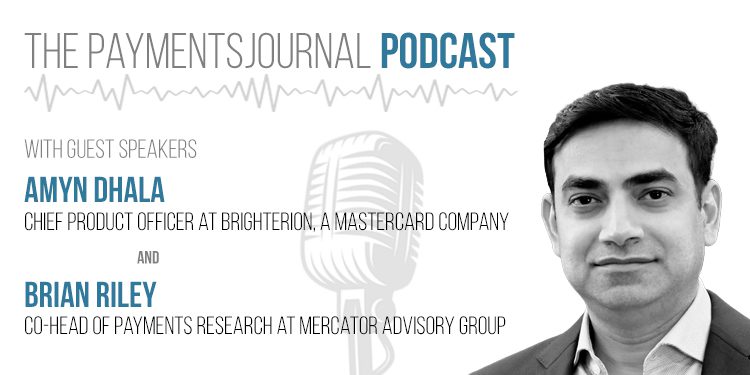Podcast: Play in new window | Download
In the event of a possible recession, it’s important for acquirers to make their businesses as efficient as possible. Increasing sales is one important part of that, but so is reducing transaction fraud. Yet, being overzealous with transaction fraud detection has its risks. If false declines on transactions are too high, customers become frustrated and stop shopping with certain merchants. This can lead some merchants to switch acquirers, which in turn ends up costing acquirers billions of dollars.
In a recent podcast, PaymentsJournal sat with Amyn Dhala, Chief Product Officer at Brighterion, a Mastercard Company, and Brian Riley, Co-Head of Payments Research at Mercator Advisory Group, to discuss why optimizing transaction fraud detection is important in the face of increased volatility.
Overview of the Transaction Fraud Space
Banks and acquiring banks are making use of machine learning (ML) models. They are leveraging internal data to predict which transactions are most likely to be fraudulent and stopping them pre-authorization.
“The key objective for acquirers is the same as it has always been — increasing revenue for merchants, increasing approval rates, and reducing fraud,” said Dhala.
What’s different now, according to Dhala, are the new tools and developments during the pandemic. They have changed the way fraud may be tackled in an economic downturn.
Brighterion uses artificial intelligence (AI) models to leverage Mastercard network data. And these models are trained on billions of transactions, and the latest payment trends.
During the last few years, customers have changed. “Over the last couple of years, we’ve seen an increased use of [digital] wallet payments. For example, making payments using messaging apps. There’s also the use of newer credit products such as buy now, pay later (BNPL),” said Dhala.
Optimizing Transaction Fraud Detection
Combatting fraud is part art and part science, according to Riley. “You could stop fraud by not approving any transactions,” he said. “Or you could increase sales by approving every transaction. It’s finding the balance between the two that’s important. If you think about the number of false positives that you can control, it’s crucial to set the dial for false negatives right. Learning from the customer’s experience with the fraud system, and recalibrating accordingly, shifts it from a science to kind of an art.”
Modern transaction fraud detection systems are characterized by cloud compatibility, rich data models, and success in real-life application. Cloud-based solutions also allow acquirers to detect transaction fraud without having their own servers, and help acquirers more easily scale up or down depending on the needs of particular companies. For example, during the holiday season, a company may require more fraud detection capacity than the rest of the year. With a cloud-based model, the company doesn’t need to permanently acquire extra server space for those months, but can ramp up or down according to its needs on a moment’s notice.
Machine Learning
At Mastercard, much of the data crunching is done by using machine learning. Implementation of these systems are typically a big lift that can take months or years, but have the potential to really pay off. “What we’ve seen with our Mastercard models is that you can detect 30% more fraud by reviewing less than 1% of transactions,” said Dhala. Brighterion has access to data from a wide variety of merchants. As a result, it’s able to offer analytics based on what is happening in the broader business community and not just the data of individual clients.
One issue with machine learning is that machines create models that are effective at predicting which transactions are likely to be fraudulent, but are completely opaque about how they work. Machine learning systems can function as black boxes, and one current area of research is how to make this less the case.
Market-Ready Models
Brighterion’s market-ready models bring together AI technology and foreign intelligence database of hundreds of billions of transactions. “This juxtaposition combination helps us provide a solution, which delivers exceptional accuracy in reducing false positives,” said Dhala. “We now have market models delivering real-time intelligence in the Americas, Europe, the Middle East, and Asia.”
Market-ready models have a few key features that make them desirable. First, an acquirer assesses payments for likelihood of fraud before the payments are authorized. Second, the solution integrates the models easily into case management user interfaces. They implement fraud solutions, as well as business intelligence applications.
“It comes down to the core basics,” said Dhala. “Acquirers and merchants are focused on improving customer experience, increasing revenue, and reducing fraud. Minimizing false positives is key. This is especially crucial in the holiday season, when customers are going after Black Friday deals.”
As previously mentioned, acquirers are focused on increasing revenue and conversion and reducing fraud. “Market-ready models help do that from day one,” said Dhala. “Because it’s already been pre-trained on billions of transactions from which you can derive insights to inform and improve your customer experience.”











